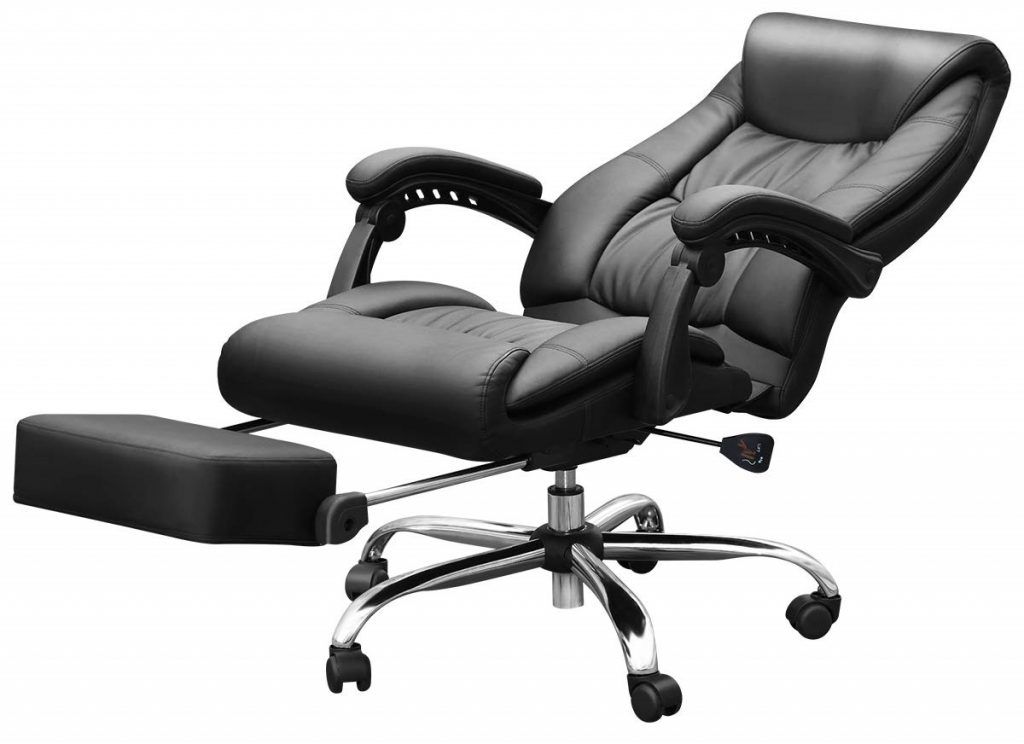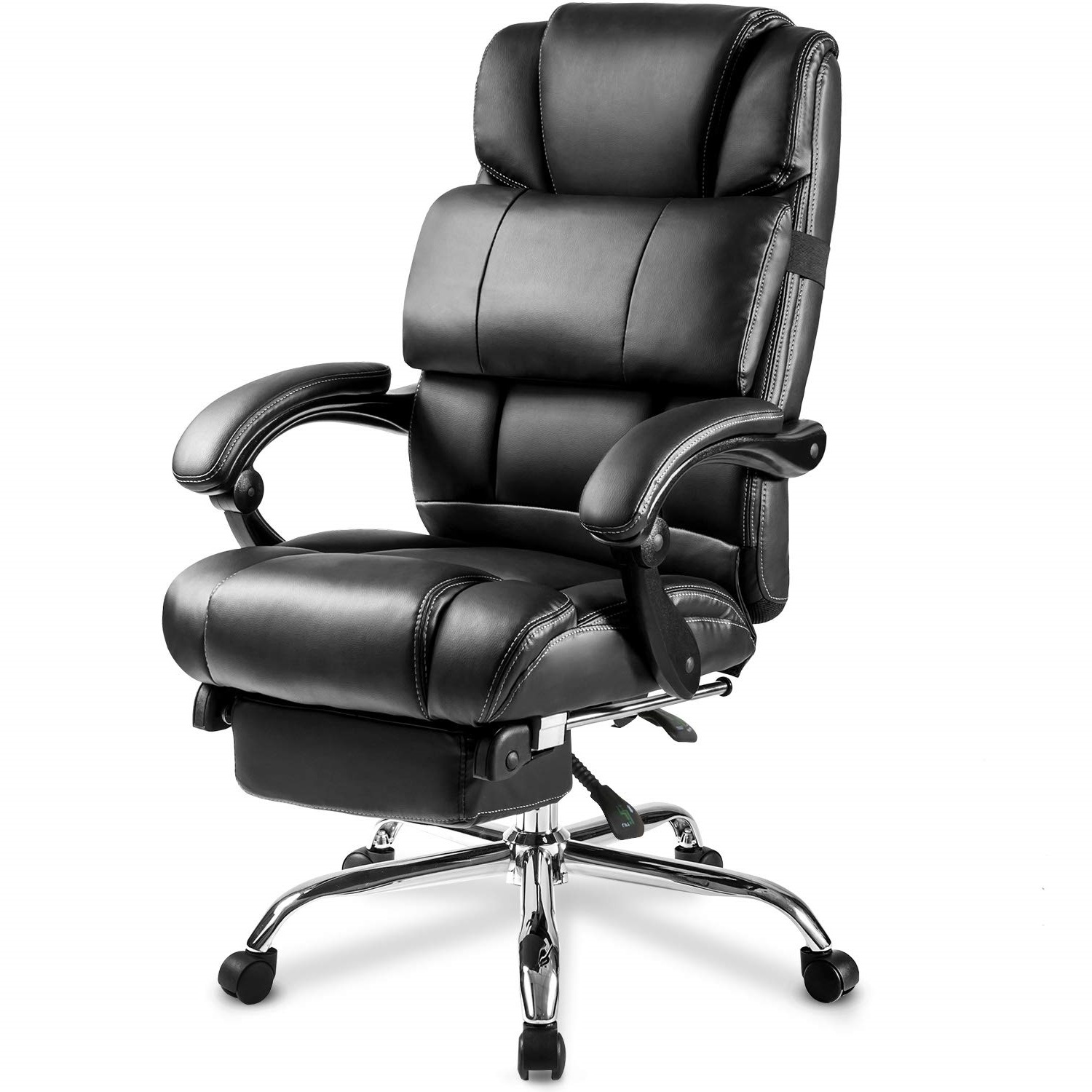Ergonomic Features for Leaning Back

Leaning back in your office chair shouldn’t just be a moment of relaxation; it should be a supportive and comfortable experience. Ergonomics plays a crucial role in ensuring that your chair promotes proper posture, reduces back strain, and provides optimal comfort for various body types and preferences.
Lumbar Support
Lumbar support is essential for maintaining proper posture and reducing back strain when leaning back. This feature provides targeted support to the lower back, helping to maintain the natural curve of the spine. When you lean back, the lumbar support prevents your back from slouching and promotes a more upright position, minimizing stress on the spine and muscles.
Adjustable Backrest Angles and Recline Mechanisms
Adjustable backrest angles and recline mechanisms allow you to customize the chair’s position to suit your body type and preferences. This is particularly important when leaning back, as it allows you to find the perfect angle for comfort and support.
- Adjustable Backrest Angles: Some chairs offer adjustable backrest angles, allowing you to fine-tune the angle of the backrest to find the optimal position for your back. This can be especially beneficial for individuals who prefer a more upright posture or a more reclined position.
- Recline Mechanisms: Recline mechanisms enable you to smoothly and easily adjust the backrest angle, allowing you to lean back without compromising comfort.
Adjustable Armrests and Headrests
Adjustable armrests and headrests enhance comfort and functionality while leaning back. They provide additional support and customization options, ensuring a personalized and comfortable experience.
- Adjustable Armrests: Adjustable armrests allow you to customize the height and width of the armrests to ensure optimal support for your arms and shoulders. This is crucial for maintaining proper posture and reducing strain on the neck and shoulders when leaning back.
- Headrests: Headrests provide support for your head and neck, reducing strain and promoting relaxation when you lean back. Adjustable headrests allow you to customize the height and angle of the headrest to ensure a comfortable fit.
Materials and Construction: Best Office Chair For Leaning Back

The materials and construction of an office chair play a crucial role in its overall comfort, durability, and suitability for leaning back. Choosing the right materials and construction can significantly impact your experience, ensuring a supportive and long-lasting chair that caters to your specific needs.
Seat and Backrest Materials
The materials used for the seat and backrest of an office chair directly affect its comfort, breathability, and durability.
- Mesh Fabric: Mesh fabric is popular for its breathability, allowing air to circulate and keep you cool. It’s often used in chairs designed for extended sitting, as it reduces discomfort caused by sweating. However, mesh fabric can sometimes feel less supportive than other materials, especially for those who prefer a firmer feel.
- Leather: Leather is a luxurious and durable material that offers a classic look and feel. It’s known for its longevity and ability to conform to the body’s shape over time. However, leather can be expensive and may require special care to maintain its appearance. Leather can also become hot and uncomfortable in warmer climates.
- Fabric: Fabric seats and backrests offer a wide range of textures, colors, and patterns, providing a variety of aesthetic options. Fabric can be breathable and comfortable, but it may not be as durable as leather or mesh. It can also be susceptible to stains and wear and tear, requiring regular cleaning and maintenance.
- Foam: Foam is commonly used for padding in office chairs, providing cushioning and support. The density and type of foam used can significantly affect the chair’s comfort and durability. High-density foam is generally more durable and supportive, while lower-density foam may provide a softer feel but may wear down faster.
Frame and Mechanism
The frame and mechanism of an office chair are crucial for ensuring stability, durability, and smooth operation, especially for chairs designed for leaning back.
- Frame Material: The frame of an office chair is typically made from metal, wood, or a combination of both. Metal frames are known for their strength and durability, while wood frames can offer a more traditional and elegant look. The choice of frame material should align with the chair’s intended use and the level of support required.
- Mechanism: The mechanism of an office chair allows for adjustments like tilting, reclining, and height adjustment. These mechanisms should be smooth and reliable, ensuring a comfortable and safe experience. For chairs designed for leaning back, the mechanism should be sturdy and able to support the user’s weight without compromising stability.
Chair Base
The base of an office chair plays a significant role in its stability and mobility. Different types of chair bases are suitable for various leaning back scenarios.
- 5-Star Base: The most common type of chair base, the 5-star base provides a wide footprint for stability and a smooth rolling experience. It’s ideal for chairs that need to move freely around the workspace.
- Pedestal Base: Pedestal bases offer a more stationary and compact option, suitable for chairs that don’t require frequent movement. They are often found in chairs designed for specific tasks or areas, like executive chairs or drafting chairs.
- Fixed Base: Fixed bases are typically found in chairs that are not designed for movement. They offer a stable and stationary platform for the chair, ideal for chairs intended for specific tasks or locations.
Comfort and Functionality

Comfort and functionality are crucial aspects of an office chair, especially when you’re planning on leaning back for extended periods. A good chair should provide adequate support, adjust to your body, and keep you cool and comfortable throughout the day.
Types of Office Chair Cushions
The type of cushion you choose significantly impacts your comfort and support. Here’s a comparison of different cushion types:
| Cushion Type | Comfort | Support | Breathability |
|---|---|---|---|
| Foam | Generally comfortable, can be soft or firm depending on density | Can provide good support, but may sag over time | Less breathable than other options |
| Gel | Provides a cool and conforming feel | Offers good support, particularly for pressure points | More breathable than foam, but can be less comfortable for some |
| Mesh | Can feel less plush than foam or gel, but offers good airflow | Provides moderate support, often combined with other materials | Highly breathable, ideal for hot climates or prolonged sitting |
Adjustable Seat Height and Depth
Adjustable seat height and depth are essential for achieving proper ergonomics.
Adjusting the seat height allows you to position your feet flat on the floor, with your thighs parallel to the floor. This minimizes pressure on your thighs and back, promoting good circulation.
Adjusting the seat depth ensures that the chair supports your back and provides adequate legroom. You should have about 2-3 inches of space between the front of the seat and the back of your knees.
Features That Enhance Comfort During Leaning Back Sessions, Best office chair for leaning back
Several features can enhance comfort during extended leaning back sessions.
- Adjustable lumbar support: This feature provides targeted support for your lower back, preventing strain and promoting good posture.
- Headrests: Adjustable headrests offer support for your neck and head, reducing fatigue and promoting relaxation. You can choose headrests that tilt, swivel, or adjust in height for optimal comfort.
- Armrests: Adjustable armrests allow you to position your arms comfortably, reducing strain on your shoulders and neck. Look for armrests that adjust in height, width, and angle for a personalized fit.
If you’re looking for the best office chair for leaning back, you need a chair with a high back that provides ample support. A high back chair is crucial for maintaining proper posture and preventing back pain, especially if you spend long hours at your desk.
While you may think that the best high back office chairs are expensive, you can find great options for under $200. Check out our guide to the best high back office chair under 200 to find the perfect chair for your needs.
Whether you’re looking for a chair with adjustable lumbar support, breathable mesh fabric, or a sleek design, there’s a high-back chair for everyone, and you don’t have to break the bank to get it.
For ultimate comfort and support while leaning back, a good office chair is a must-have. Just like you need a comfortable seat to relax and focus while working, hunters need a stable, swiveling base to remain undetected and track their prey.
For the best hunting blind swivel chair, check out this guide: best hunting blind swivel chair. Similarly, when choosing an office chair for leaning back, prioritize features like lumbar support, adjustable recline, and a sturdy base for optimal comfort and stability.
